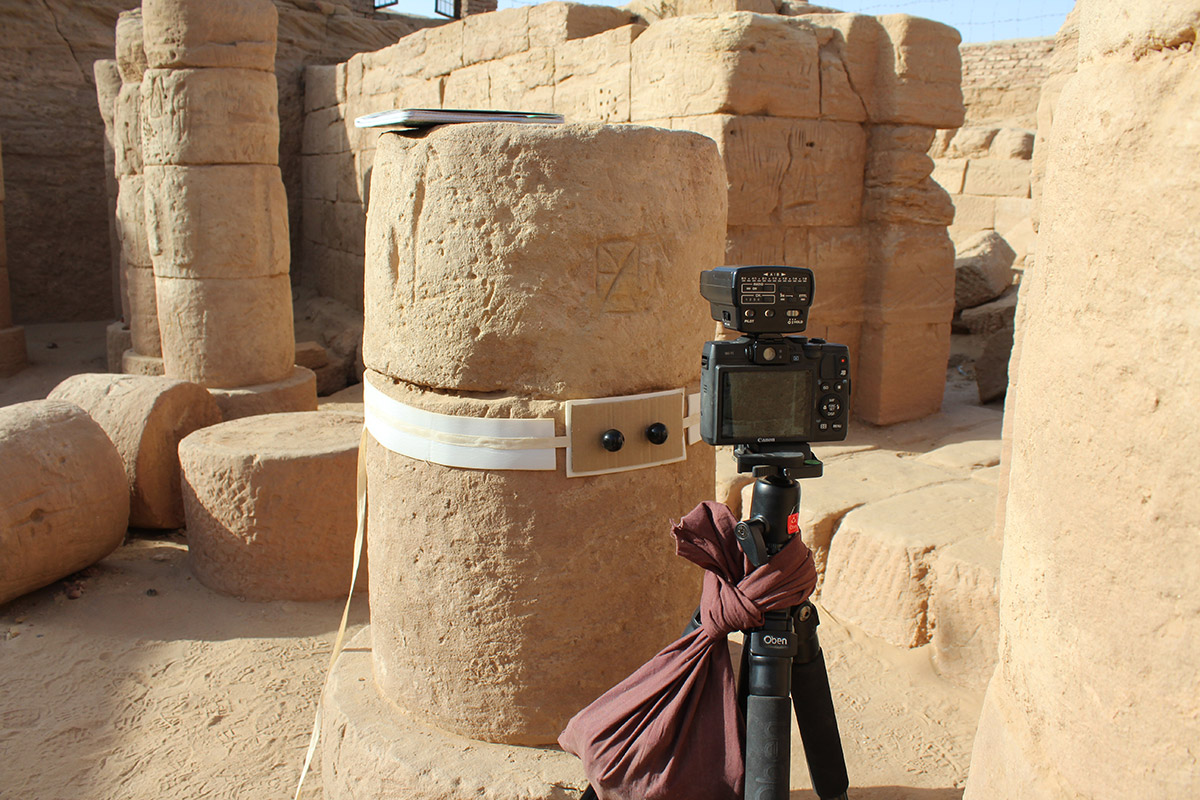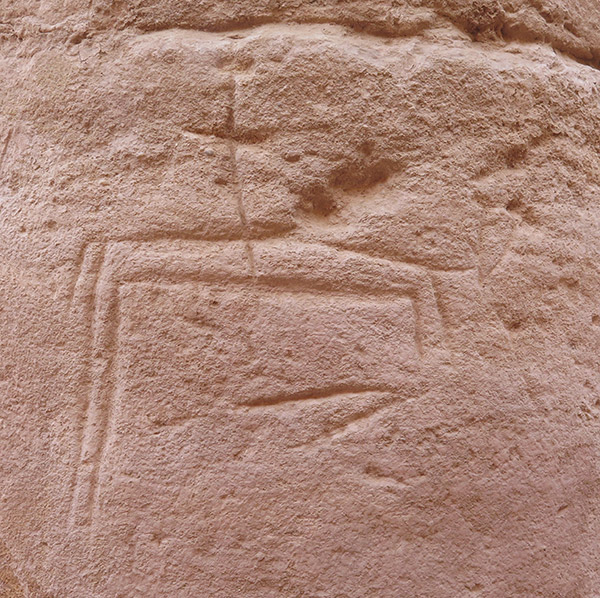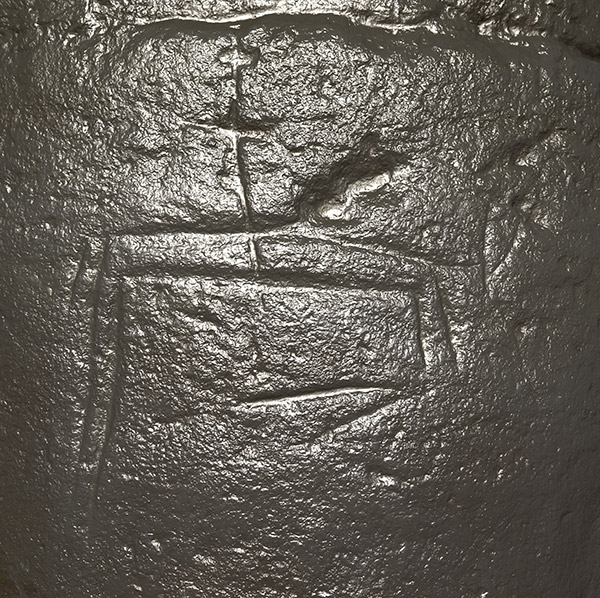Graffiti Documentation
Using Reflectance Transformation Imaging (RTI)

Reflectance transformation imaging, or RTI, is a computational photographic technique used by archaeologists and conservators to record and study hard-to-read surfaces.
In RTI, the camera remains stationary while multiple photographs are taken as the graffito’s surface is lit from about 50 different angles with a portable flash. Two reflective spheres (glossy black balls) are placed in the image frame to provide reference points.
After the photography for a graffito is complete, the photographs are processed with software that merges them into a single file. The highlights on the spheres are used to calculate the many possible lighting options in the final file, and this allows the viewer to play light across the surface from every angle. The software also offers “rendering modes” which apply mathematical transformations to enhance the image in different ways. This feature can make hard-to-read surfaces more legible.
Graffito of Horse and Rider in Four Different Lighting Conditions
RTI: Suzanne Davis and Janelle Batkin-Hall/IKAP.





